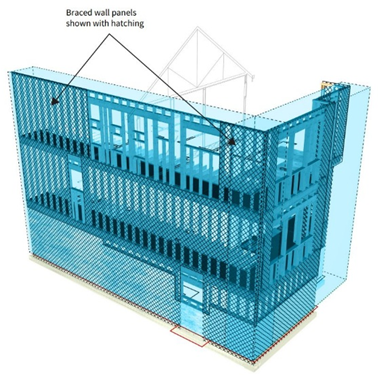Member KNOWLEDGE CENTER
 member Knowledge center
member Knowledge center
The Knowledge Centre provides CHBA members with access to information and resources. It is a growing resource that is currently focused on updating members about national building code information. Please note that this information is a benefit of your membership, and should not be shared beyond your company/organization.
You can browse the items below, filter by category, or enter search terms in the "What are you looking for" box below.
Lateral Loads Resistance

Lateral Loads Resistance
April 28, 2025
Lateral Loads Resistance
What does the National Building Code (NBC) say about this?
Since the 2010 edition, the NBC has had minimum requirements for the resistance to lateral loads for regions with high wind- and earthquake loads. The 2025 NBC will require all homes across Canada to handle lateral forces because the exemptions for low-wind and earthquake locations were removed, so all homes in all locations will have to meet the minimum bracing requirements.
Why was a new “Illustrated Guide: Lateral Bracing Requirements” developed?
In March 2024, the Government of British Columbia added the proposed 2025 NBC requirements to the British Columbia Building Code and published a new guide to help builders comply with the new requirements and design homes to better resist local wind and earthquake loads.
Main Technical Concepts:Braced Wall Bands: Imaginary zones throughout the home (shown in light blue) where bracing is required. Braced Wall Panels: Sheathed wall sections that resist lateral loads (shown with hatching). Sheathing Materials: Plywood, OSB, gypsum board, plus specific sheathing methods. Compliance MethodsSimplified Method: Small, compact wood-frame homes can make use of an exemption based on very conservative design assumptions (see Appendix B.1 in the guide). |
|
Table Method: Showing the required length of Braced Wall Panels in Braced Wall Bands for each storey of a home after builders select the number of storeys and their sheathing method. (see Appendix B.2 in the guide)
Design Method: The most flexible method in Part 9 of the NBC (while structural design according to NBC Part 4 would be the most flexible). It takes local climatic data into consideration and uses detailed factors and look-up tables to determine acceptable design options (e.g. required length of bracing).
Where can I find more information?
In addition to the detailed BC design guide mentioned above, the Canadian Wood Council has developed an online calculator to determine the required length of bracing.
This information is provided by CHBA for informational purposes only and cannot be used as an official or authoritative document.
The content of this document does not necessarily reflect the views and policies of the Canadian Home Builders’ Association.
The mention of trade names and commercial products does not constitute a recommendation or endorsement of use.
Additional Info
Download File : Tech Essentials Lateral Loads 2025-04-28.pdf


